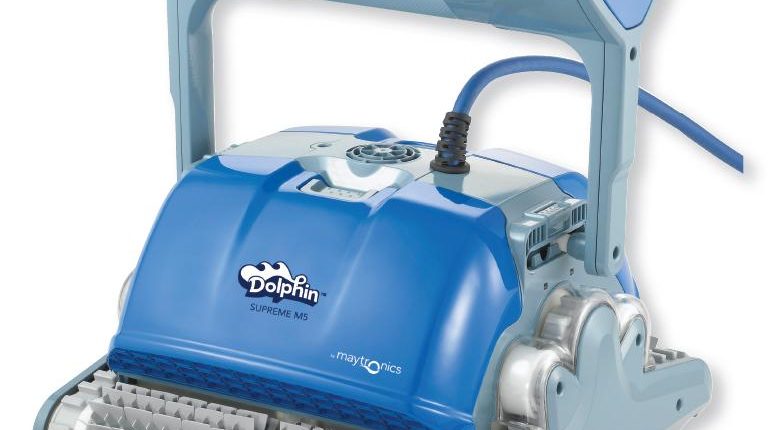We are often asked the question: “Which automatic cleaner is best for my pool ?”. Unfortunately there is no simple answer to this question as the answer will depend on:
1. Your pool size, shape and construction
2. The type of debris you get in your pool
3. How you use your pool (amount of swimming and number of users)
4. How often you are at home or away
5. Your budget
So rather than trying to solve this exact question here (which is impossible without personal consultation), I will instead try to give a general overview of the types of automatic pool cleaners out there and the pros and cons for each type.
First, there are 3 main categories of automatic pool cleaners:
1. Suction
2. Pressure
3. Robotic
1. Suction Cleaners
All suction cleaners, for the most part, are designed to plug into the skimmer vacuum plate assembly and operate whenever the filtration system is operating. The main disadvantage to this of course is that whilst there is still usually some bypass available in the skimmer box from the supplied cleaner speed control valves, the amount of skimming action available is greatly reduced. This means that, for the most part, the debris entering the pool will fall to the floor of the pool and you mainly rely on the suction cleaner to try and pick it all up. Most name brand suction cleaners will clean the floors properly, and the walls to some degree, but rarely will they clean the bench and steps. Also they are for the most part intended to remain in the pool at all times, which can inhibit swimming or require removal of the cleaner before swimming if a large crowd is expected.
To break them down more, suction cleaners can be categorized into two main types that I call:
i. Hose lead suction cleaners
ii. Self steering suction cleaners
i. Hose lead suction cleaners
These are by far and away the most common type of automatic pool cleaners used. They all feature some kind of moving diaphragm/flow valve/piston etc. that provides the propulsion for the cleaner to lift and move along the pool floor. They have no smarts as such and rely on the hose to mainly determine which direction the pool cleaner moves next. Their main advantages are that they are relatively inexpensive and simple to maintain and repair. Their main disadvantages are that they can commonly get stuck in corners and steps and may also stop working because of larger debris (ie. Leaves and seeds etc.) getting stuck in their throats.
ii. Self steering suction cleaners
These cleaners are definitely less common than their hose lead cousins, but can offer great advantages over them if suction is the way you want to go. The essential difference is that they generally utilise some form of turbine assembly, that when spinning from the water flow, drives gears which in turn makes the cleaner drive itself around the pool. Their main advantages are that because of the gear driven action, these cleaners rarely ever get stuck as most are able to back themselves out of a sticky situation and also most of them generally are able to handle larger debris than the hose led kind as the turbine method usually allows for larger debris to pass by without affecting the cleaner propulsion. Their main disadvantage is being gear driven, there is a higher element of wear inside the cleaner and more parts maybe required to be replaced as the cleaner ages.
2. Presssure Cleaners
Pressure cleaners are unique in that they are operated from the pressure side of the pool pump (ie. from the water that the pump is returning back to the pool rather than the water being sucked from the skimmer box). They are a little similar to the Self steering suction cleaners in that most have a turbine and gearing assembly that allows them to drive themselves around the pool.
Because they are not filtering the water through the skimmer and filter, they have some kind of bag attached to them to catch the debris they pick up. Their main advantage is again that they rarely get stuck and can handle quite large debris. Their main disadvantage is that most are powered by a separate booster pump, which means extra electricity running costs.
These cleaners are becoming far less common nowadays and have been rapidly replaced by Robotic cleaners.
3. Robotic Cleaners
These cleaners represent the latest in pool cleaning technology. These cleaners have been used in commercials pools for around 30 years now, but have only recently become more affordable and specifically developed for residential pools. Robotic cleaners are run from transformed power supplies that plug into the mains power supply and transform down to a safe low voltage current for the cleaner to operate in the pool, this in turn makes them very inexpensive to operate. They are fully self-contained and have their own motors and cleaning bags/baskets to catch debris in. All robots should have no moving parts in the flow of water being picked up, which means they can handle any debris that will fit up through their large suction ports.
These cleaners are a fantastic partner for a variable speed energy efficient pump. Because you are not trying to operate a suction cleaner (requiring much higher pump flow), you can utilise an energy saving pool pump in it’s lower available settings to maximise your return. Also your skimmer box is free to do it’s intended job as it not lumbered trying to run a suction cleaner all day, meaning more debris is collected in skimmer before it gets a chance to fall to the pool floor.
These cleaners are generally dropped into the pool when cleaning is required and then removed from the pool once clean, thus freeing up the pool for unobstructed swimming. Most of the top end units will also feature programmable timers which allow for users to leave the cleaner in the pool to clean the pool for periods that they may be away from home.
To break them down more, robotic cleaners can be categorized into two main types that I call:
i. Jet powered robots
ii. Smart Robots
i. Jet powered robots
These cleaners are robots, but don’t have any smart brain inside them. They use a jet stream of water to push the cleaner backwards and forwards across the pool surface and rely on the axle system of the cleaner to turn them across the floor to give coverage. Their main advantage is that they offer the energy saving and debris handling of the smart robots but at a much cheaper price to purchase. Their main disadvantage is that because they have no smart logic on board they might not clean all of the pool surface in one cycle. They will generally also not clean all walls, benches and steps.
ii. Smart robots
These cleaners offer the ultimate in pool cleaning experience. These cleaners all feature in-built logic and drive motors that self-steer the robot around the pool. The high quality brand units will have a memory of various pool shapes and sizes built in and will analyse the pool to determine which best suits. These cleaners are available in lower end models that will only clean the floors, right through to top end models that will clean all floor, walls, benches and steps thoroughly in one operation cycle. Higher end models should also come with a caddy trolley to facility easy operation and storage of the cleaner when not in use.
In summary, as you can see it really is horses for courses. Please feel free to contact us to discuss what cleaner is best for your needs.

